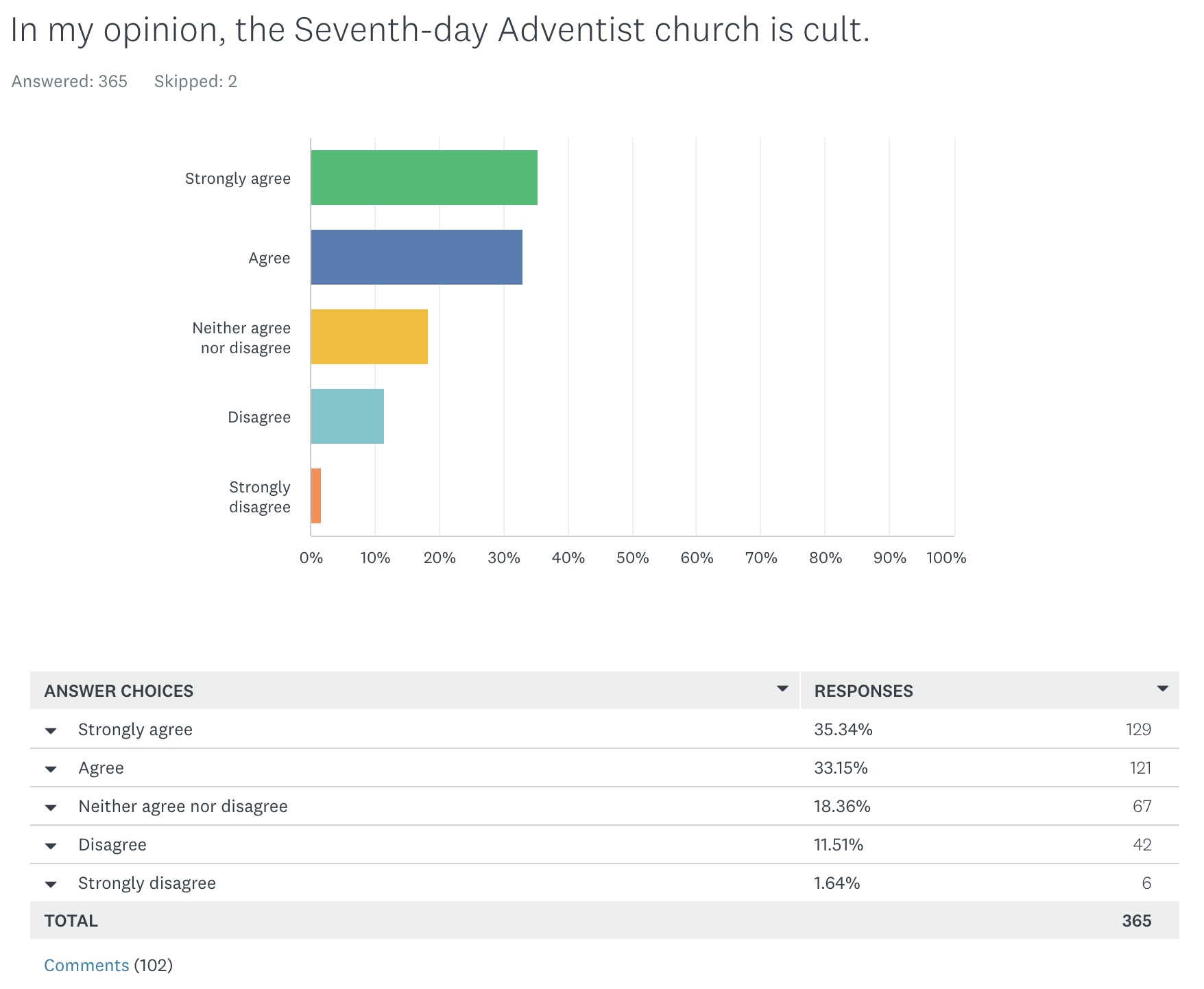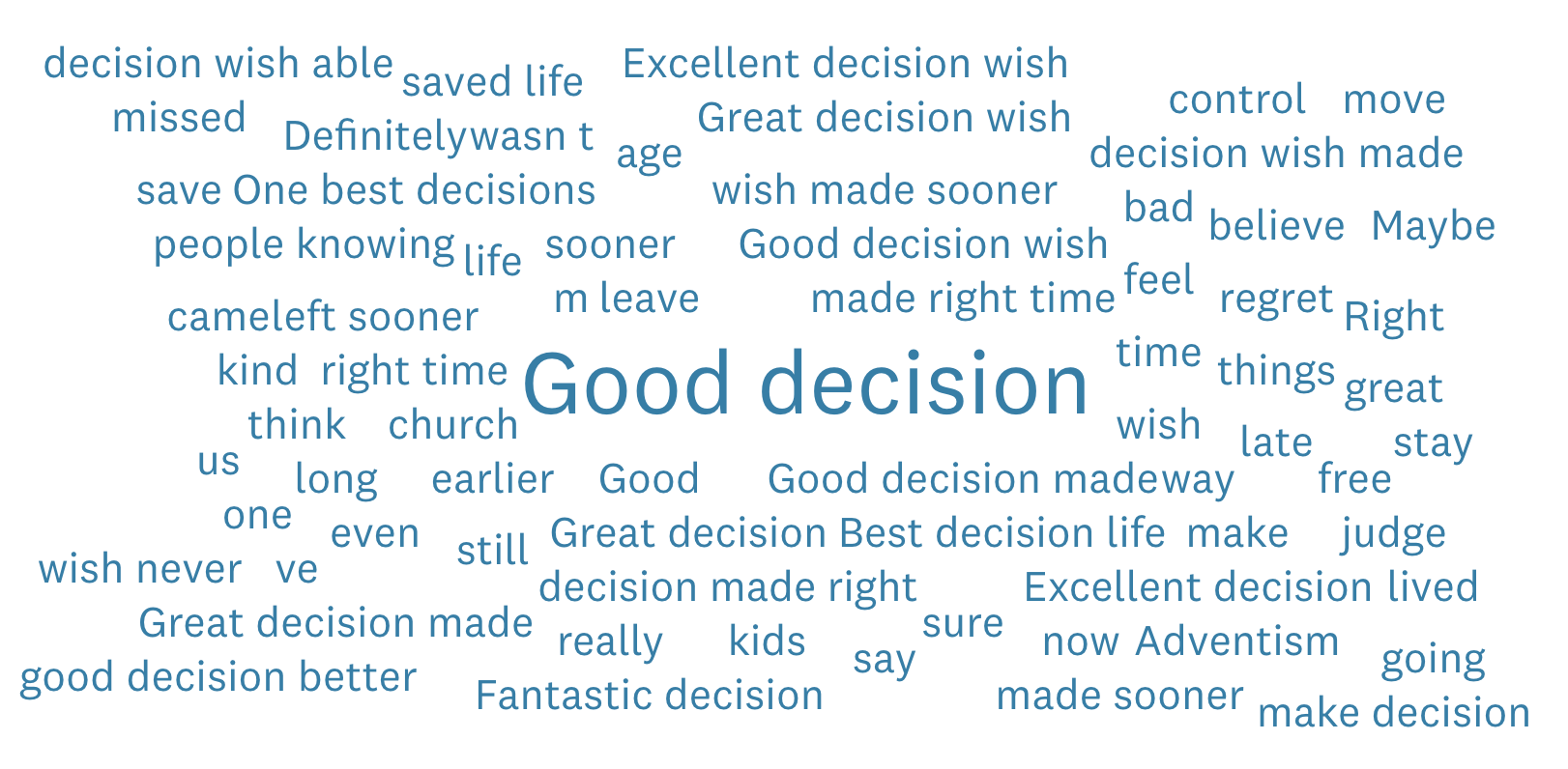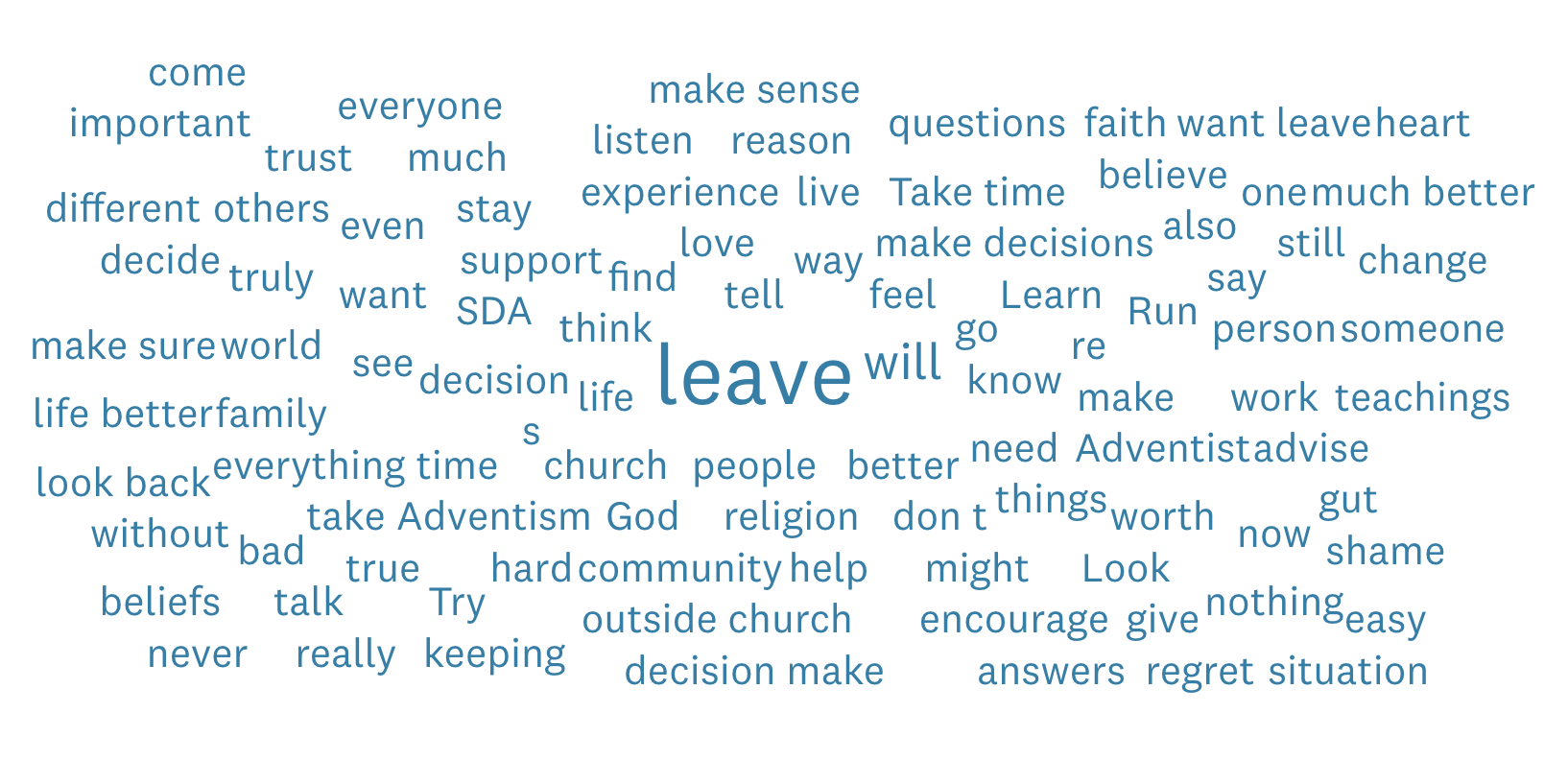“Adventism only seems to reward certain people–affluent white cis men and those they deem worthy to be elevated.”
-Alyssa
Alyssa’s story
The phrase ‘qualitative research data’ sounds impersonal and void of humanity, but what we as researchers know and respect is that each word shared is coming from a real person with a voice, a face, and a heart. As I read through the copious and generous comments written by each respondent I am humbled by the openness, awed by the passion, and saddened by some of the heartbreaking comments.
After taking our survey one respondent felt a need to speak more about her experience with the Adventist church and sent us a direct email. Alyssa’s story is her’s to share and, with her permission and encouragement, we invite you to read her words, many of which -both in tone and content- are repeated by her fellow respondents. Please note that the words in bold are my emphasis, not hers.
Alyssa starts,
Hello!
After taking the survey yesterday, a lot of memories resurfaced and I realized my survey responses weren’t very concrete, and the more I thought about it the more I realized I left out a lot!
For some context, I was born into a multi-generation Adventist family but didn’t start going to an Adventist school until 4th grade. I think I’m extremely lucky because my parents were just going through the motions of being Adventist, and really carved out a life that pushed against the boundaries as much as they could while still in the system. But even having liberal, open-minded and supportive parents, the schooling system was strong enough to really cause some damage.
I don’t want to dump this on you and your research team, but after reading the Eighth-Day Freedom blog and seeing some other people’s comments and experiences, I felt like I should share some specific examples of things that, in hindsight, are a form of abuse or just really disappointing experiences in general:
-
- My parents chose to put us into an Adventist school because academically, it was the best school in the area. I found out in college that kids who’d gone to other Adventist schools really struggled with a number of subjects, which led me to believe that my school had been a bit of an outlier. That being said, the way religion was taught at this school was deeply problematic.
- In 1992, when I was 9 and in the 4th grade, my first year at an Adventist school, we were told that Adventists are a persecuted religion and at any moment we’d have to run and hide in the mountains from the government, taking only what we could carry like the Waldensians of Switzerland. This gave me nightmares for years.
- When I was in the 7th grade, our religion textbook said that we’d be rounded up in internment camps and just before we’d be gunned down by machine guns, Jesus would come. More psychological trauma and fear. Our teachers wouldn’t directly teach us this but we were assigned to read it any way.
- We were also taught that if we were faithful to Adventism, we’d be saved from death (but not persecution) because we were the chosen people. Jews were not considered chosen any more because they’d broken their covenant with God (according to more than one teacher).
- In Jr High we were strongly influenced into signing abstinence pledges
- Even though Adventists don’t believe in the rapture, we had a high school religion teacher who was from the Philippines who quasi-believed in it and showed us the “Left Behind” movies at the end of the school year.
- Colleges require worship, either once a week or multiple times a week. If you don’t do it, you’re eventually expelled (you could only miss a certain amount). There was no trust at all about allowing people to be adults or grow their faith in their own way. College became a chance to grow intellectually in some areas but not in others.
- At one point in college, I was told that yoga is bad because it’s a religious practice that invites the devil in. I remember realizing at that point that Adventists from all over the world are wildly different and while I grew up in a pretty ‘liberal’ area (we went out to eat on Sabbath and few people thought that was bad), there are a lot of Adventists that sequester themselves into highly controlled communities and cast a lot of judgement on others. College was definitely an eye opener on just how diverse Adventism is and between these experiences and how my home church behaved toward my family, just how toxic it really was for me.
- The Adventist church changed a lot in my teens and twenties, so much so that my grandparents commented on it before their deaths in the late aughts. The pivot toward evangelical services and less “old-school” community-based church services was pretty noticeable, and now it seems deeply right-wing in ways I don’t think my grandparents would recognize.
- The overt and covert sexism in Adventist culture is something I try to forget. It was constant and relentless, and between that and seeing how sexist secular culture was like in the aughts, there was just no way to win as a young woman growing up. The older I got the more evident it was that my value as a woman was tied to whether or not men found me desirable enough to date or marry, and being single well into my 20s, it was very clear that I’d never find an Adventist guy worth being with, nor would I want to be with one. My friends and I talk a lot about how generations of girls and women have been so damaged by being linked to a conservative religious group. It’s heartbreaking.
- Adventism only seems to reward certain people–affluent white cis men and those they deem worthy to be elevated. They’re the ones that matter the most to the structure of Adventism, the church, and to the community. It’s very clear that everyone else matters less and less the further away you get from those qualifications. If you don’t fit whatever desirable mold is in place in that moment, then it can’t be much of a surprise when people drift away.
- Nothing about the Adventist education system prepares a person for life outside of Adventism. I mentioned this in the survey in the last question that professionally, it was a huge challenge to not be within the Adventist system, but it was a challenge socially as well. I remember feeling almost stunted when I left college because so many people I met at my first couple of jobs just had way more life experience than I’d had–not just sex and drinking, but they read different books, felt at ease with various people of different backgrounds, and engaged with the world so easily. I eventually caught up but it took time and it was a pretty isolating experience.
- With the exception of some academic pockets, it felt like there was almost a systemic lack of curiosity about the world and the rest of society. I commented in the survey about political apathy and apolitical stances, but it was alarming how many American Adventists did not care about the world around them–about wars being fought in their name, about political decisions made on their behalf, or about America’s place in the world in general. This was frustrating for my family since so many people we socialized with just cared about the Adventist community around them and Adventist politics. Because we didn’t really feel the same way, I know people thought we were smug. This wasn’t as true for the European Adventists I’d met, but my experience going to an Adventist college in the UK was seeing how much less of a bubble Western European Adventists live in.
- None of my immediate family is Adventist and hasn’t been for ~20 years. We’re all a lot happier, though we carry our own scars.
- I think being an older millennial meant that I missed a lot of potential validation online, because social media didn’t really exist until I was in college, and it seems like a lot of dissatisfied people eventually found support in online spaces, which is really commendable.
I still have friends I made in college, and my best friend since the 7th grade. None of us are Adventist any more. One still goes to church from time to time but she married an atheist. . We all feel like we missed out on something, or that at the bare minimum we had a really steep learning curve in our 20s, figuring out how the world outside Adventism works. My few friends who are still Adventist have become “Christmas card friends”.
My husband is atheist and grew up Episcopal. His church experience was limited to Sundays and was mostly enjoyable but he never felt that God was real. He jokes that I grew up in a cult and is always amazed by the “super weird and totally bonkers” Adventist beliefs that aren’t found in mainline Christianity. I went to an Episcopal church for a while, and even a United Church of Christ to see what it was like–both of which had women as their spiritual leaders! It was a peaceful experience, but it ended up making me feel a little sad because they seemed so normal. Ultimately, I think I’d burned out a part of myself on religion. Those other services were enjoyable but I was afraid to get involved or in too deep because of what I experienced within an all encompassing Adventist religion that was so corrosive.
Lastly, the sheer fact that when Adventists speak about other people they say “non-Adventists” is a huge red flag! It’s Adventists, and non-Adventists. I’ve met a lot of people who were just
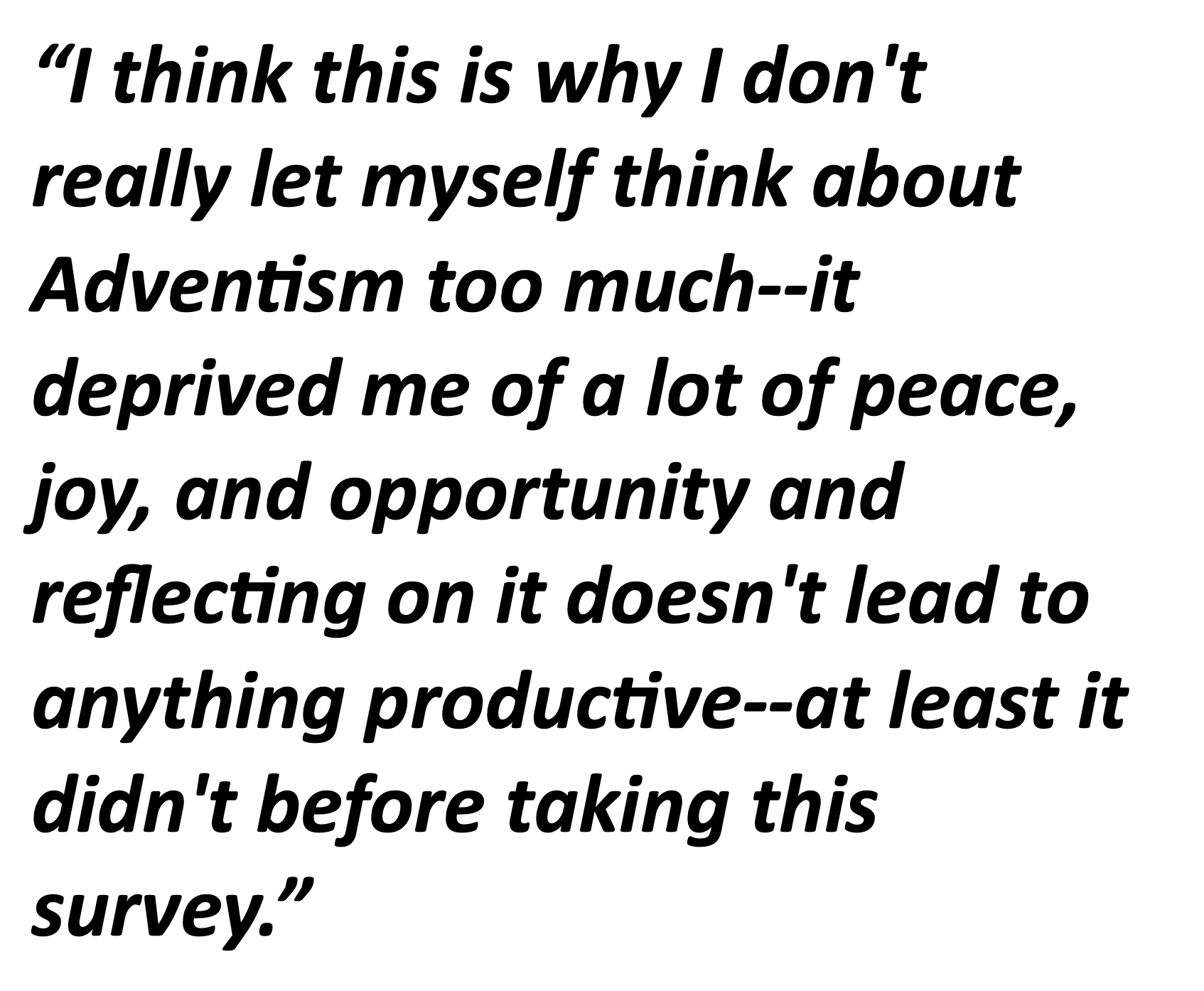
ifiably very salty about this–that Adventists lump other Christians or monotheistic faiths in with other religions and atheists. The vocabulary of Adventism is designed to separate its people from the world, just as its institutions are designed to self-sustain a community under the pretense that it’s above everything and everyone else.
I think one memory from college helps back up this feeling of Adventism not being a good fit: In early 2006 I worked for the school paper at one of the colleges I attended, and I interviewed a couple administrators on the future of Adventism. I remember there had been a lot of discussion around that time about The Church numbers and millennial church attendance, but one administrator I spoke with wasn’t concerned. He explained that there was always a drop in attendance after young people graduate college, but then they would start having kids and they always came back. This talking point has stayed with me because it felt like there was asense of inevitability that The Church doesn’t really have to change or evolve because once we start having children, we’ll want to replicate the lives we had growing up (there was no addressing people who don’t have children), and Adventism offers consistency in a changing and uncertain world. I imagine for some people that sounds wonderful, but for people hurt by the actions of those within the church, or by The Church doctrine and structure itself, it’s hard to justify staying when it all feels increasingly at odds with how people really live and interact with the world.
I think this is why I don’t really let myself think about Adventism too much–it deprived me of a lot of peace, joy, and opportunity and reflecting on it doesn’t lead to anything productive–at least it didn’t before taking this survey.
If you feel that using any of this information would be helpful, please do so. I apologize for dumping this on you and appreciate you taking the time to read it all! lease let me know if there is anything else I can do to help with your efforts.
Best Regards,
Alyssa
Thank you and an invitation
What Alyssa shared is a deeply personal story and I thank her for her generosity and candor. What I know from her and others is that taking the survey can spur many memories which can be both painful and difficult to wrestle with. Sharing these memories can be cathartic even if (or especially if?) just sharing them anonymously on a survey.
I opened this post with a statement from Alyssa which particularly struck me, “Adventism only seems to reward certain people–affluent white cis men and those they deem worthy to be elevated.” I have devoted much of my time in the last few years developing and talking about the concept of critical Hydra theory (CHT)1, and what Alyssa points out in her statement affirms the basic premise of this model, namely that all of the privileging forces emanate from one source -toxic othering. Although this specific comment from Alyssa only references class, race, and hetero/cis normativity, the other heads of the Hydra can also be inferred. I invite you to learn about CHT and how religion has been used ever since the rise of mono and poly theisms a few thousand years ago to normalize the marginalization of ‘others’ including women, the poor, and POC, among other ascribed statuses. If you care to jump down the CHT rabbit hole click here.
1Critical Hydra theory is inspired by and in many ways based on Critical Race Theory (CRT).


 Follow
Follow
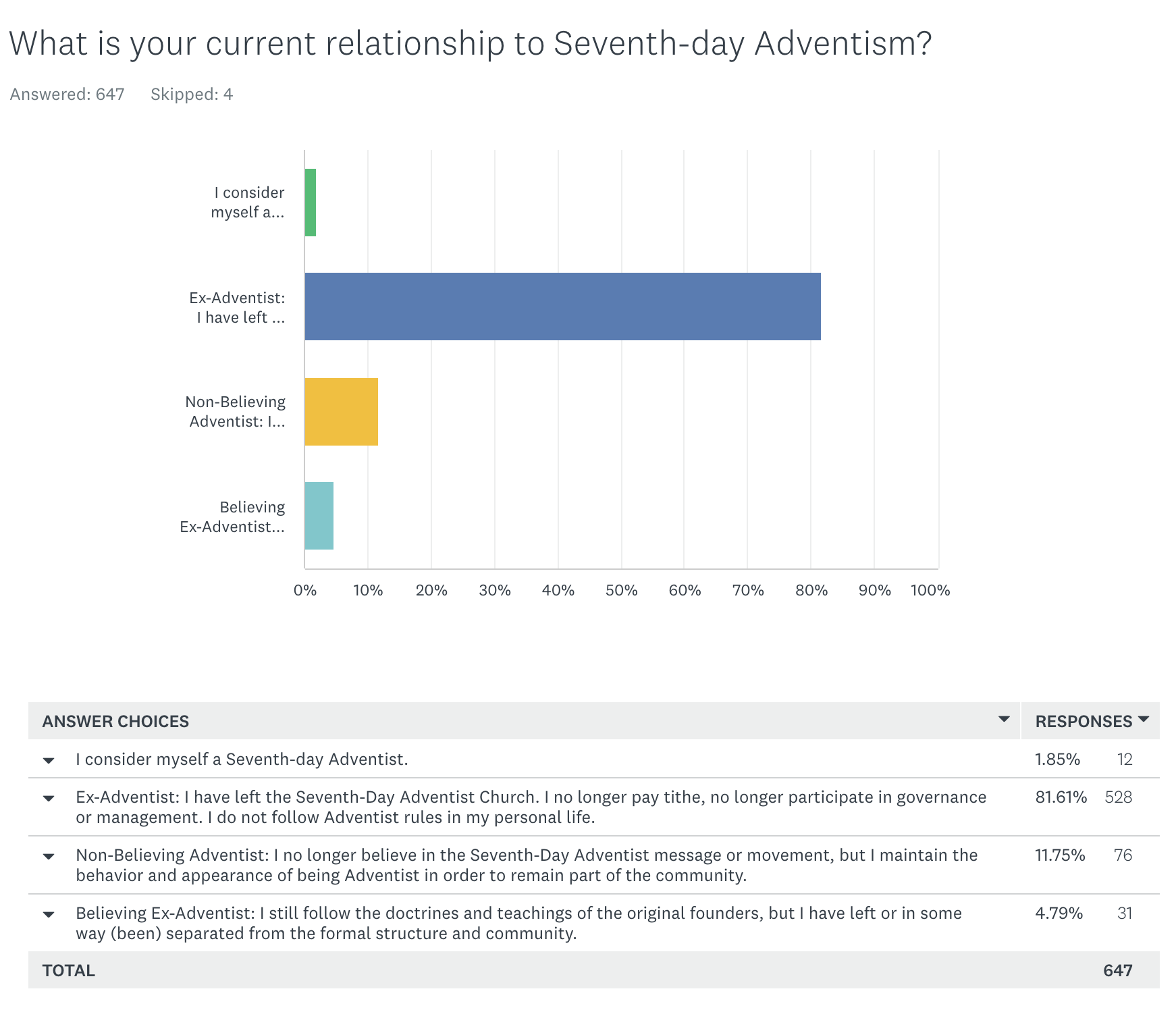
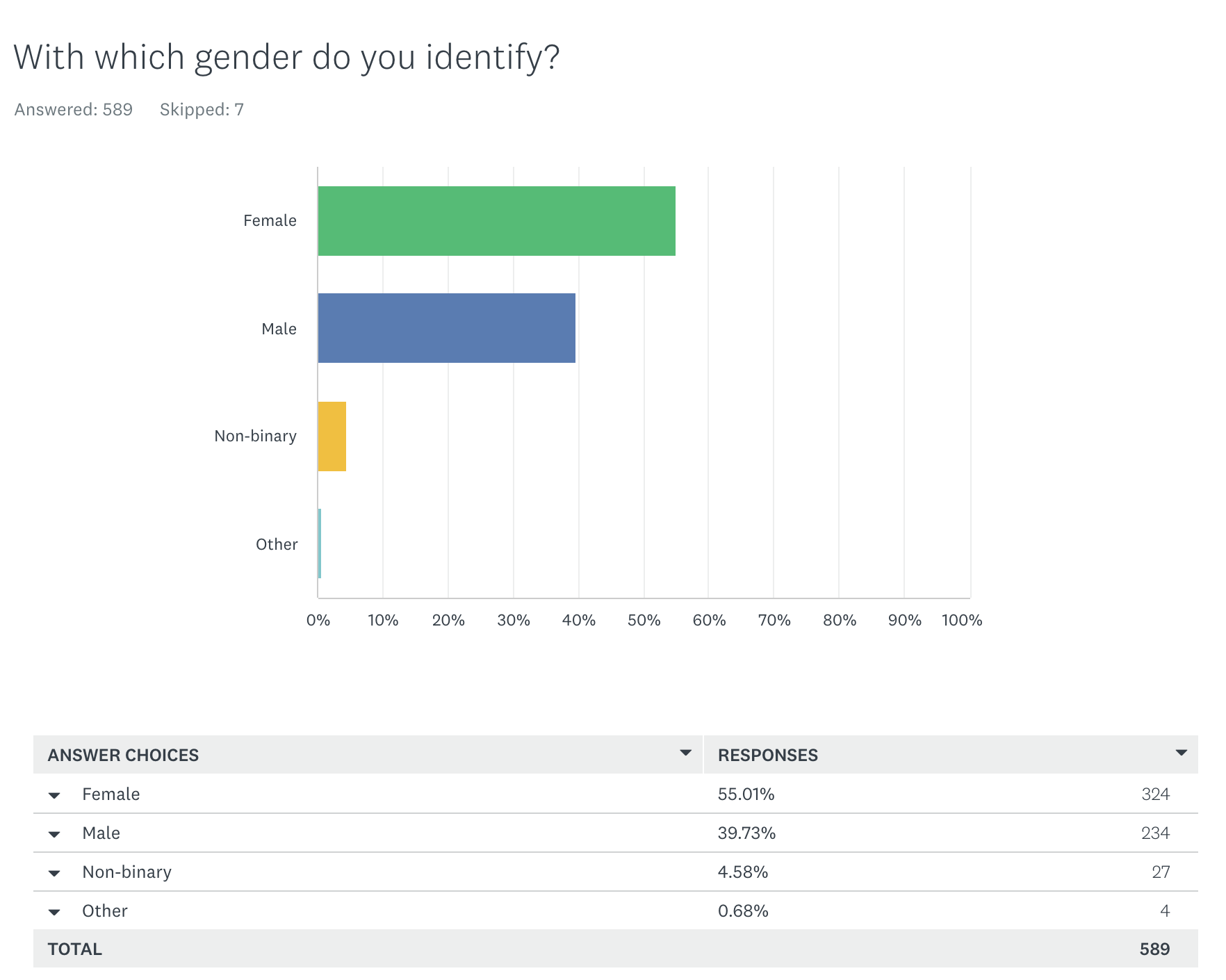
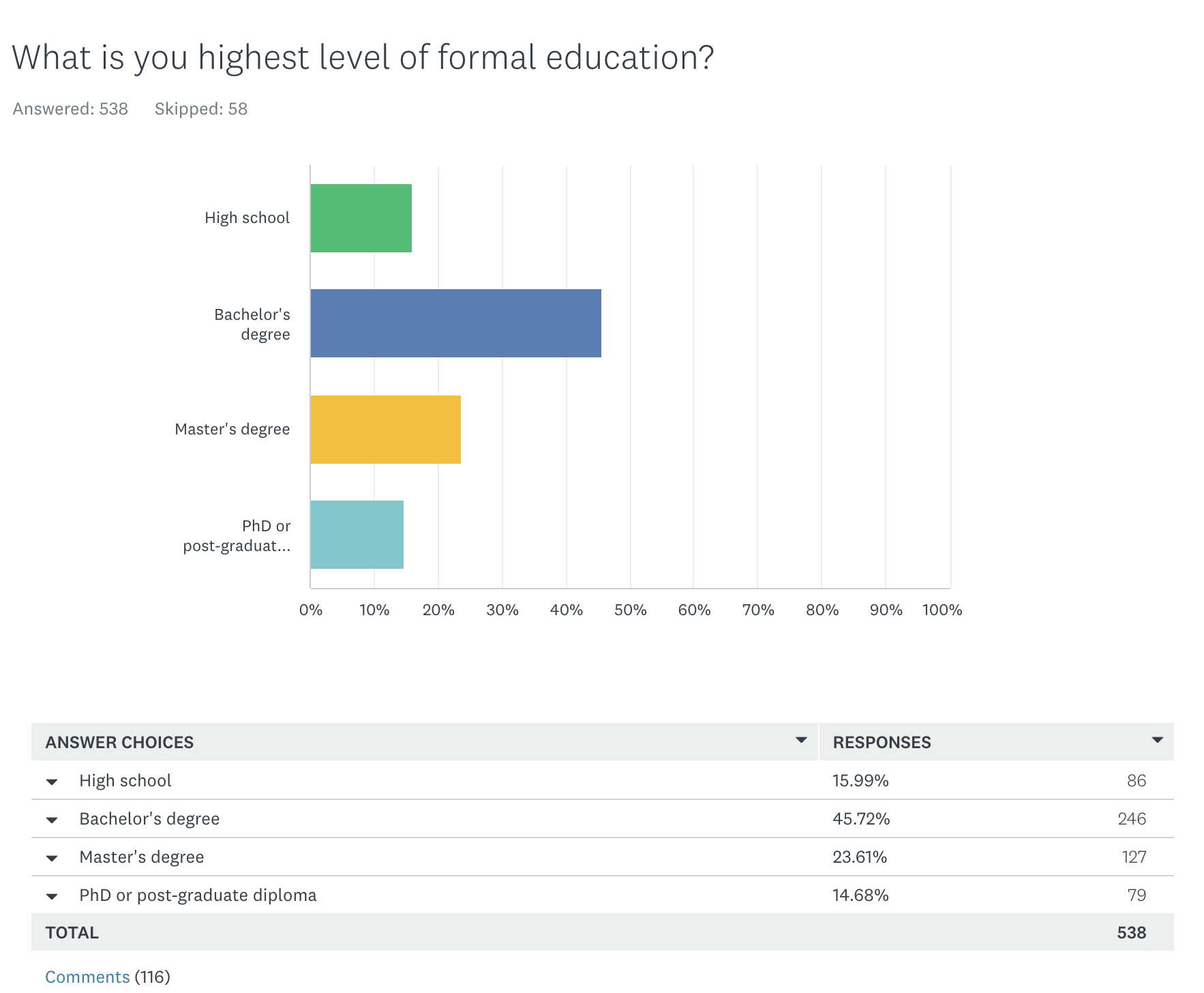
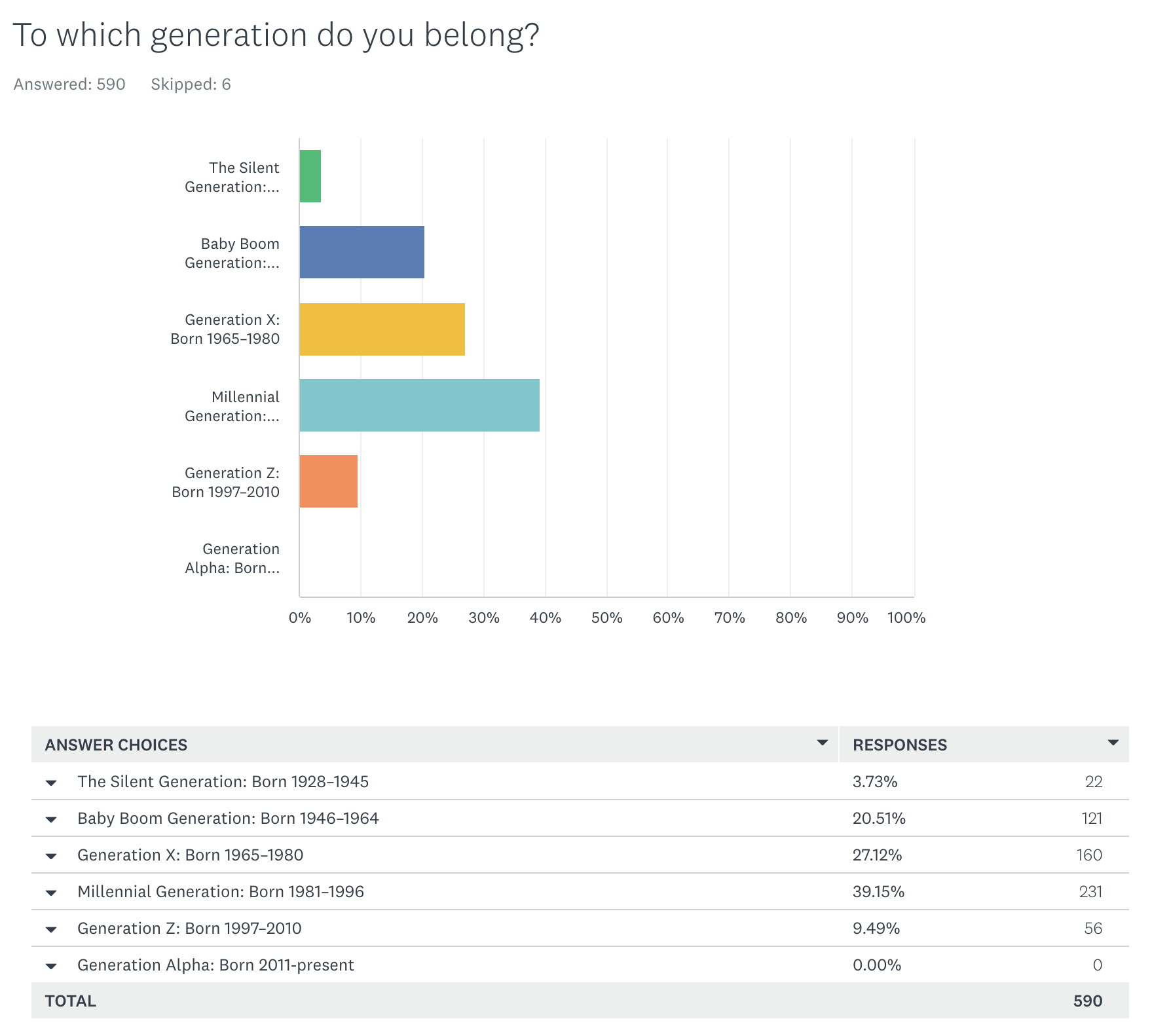
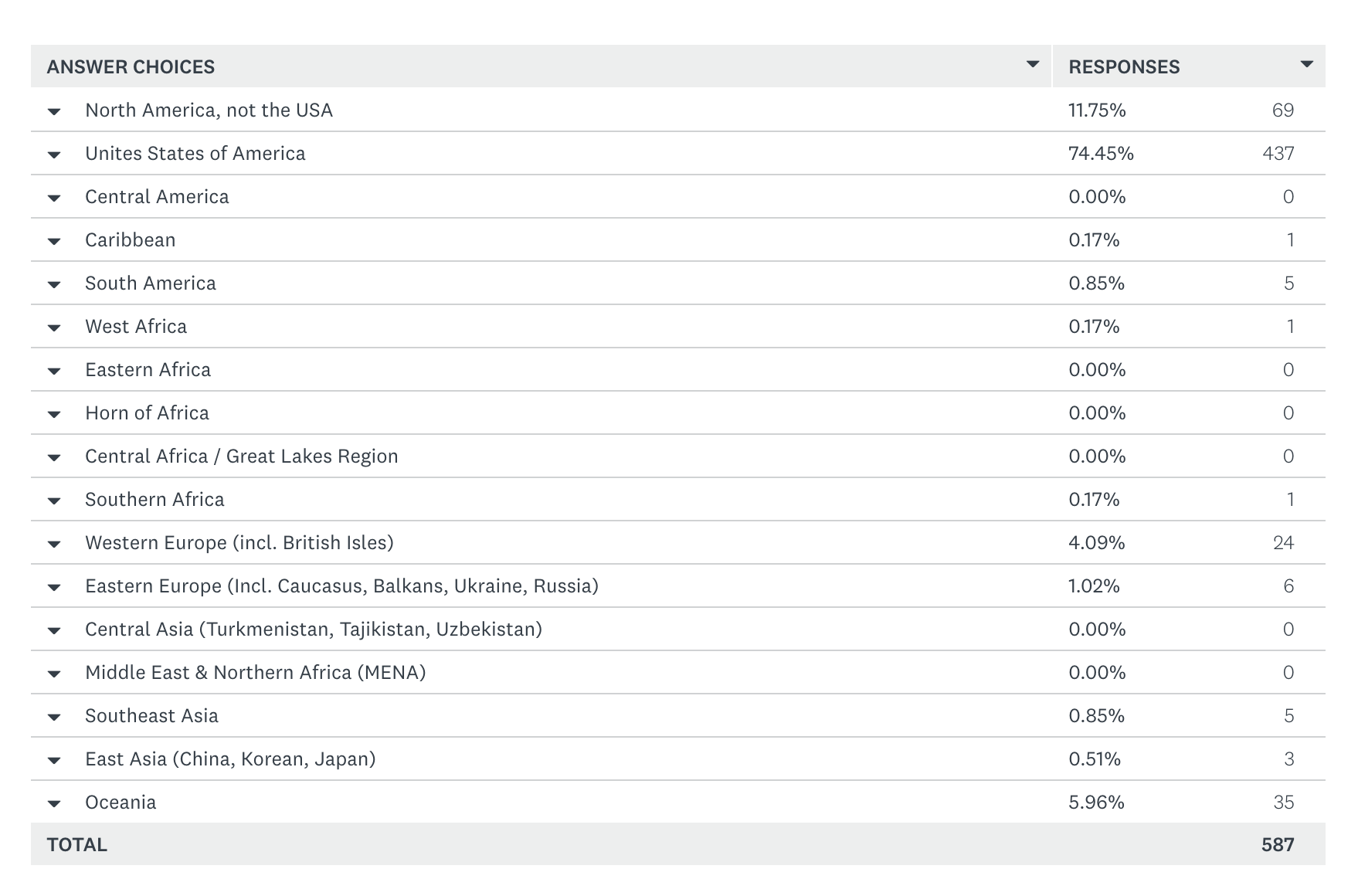
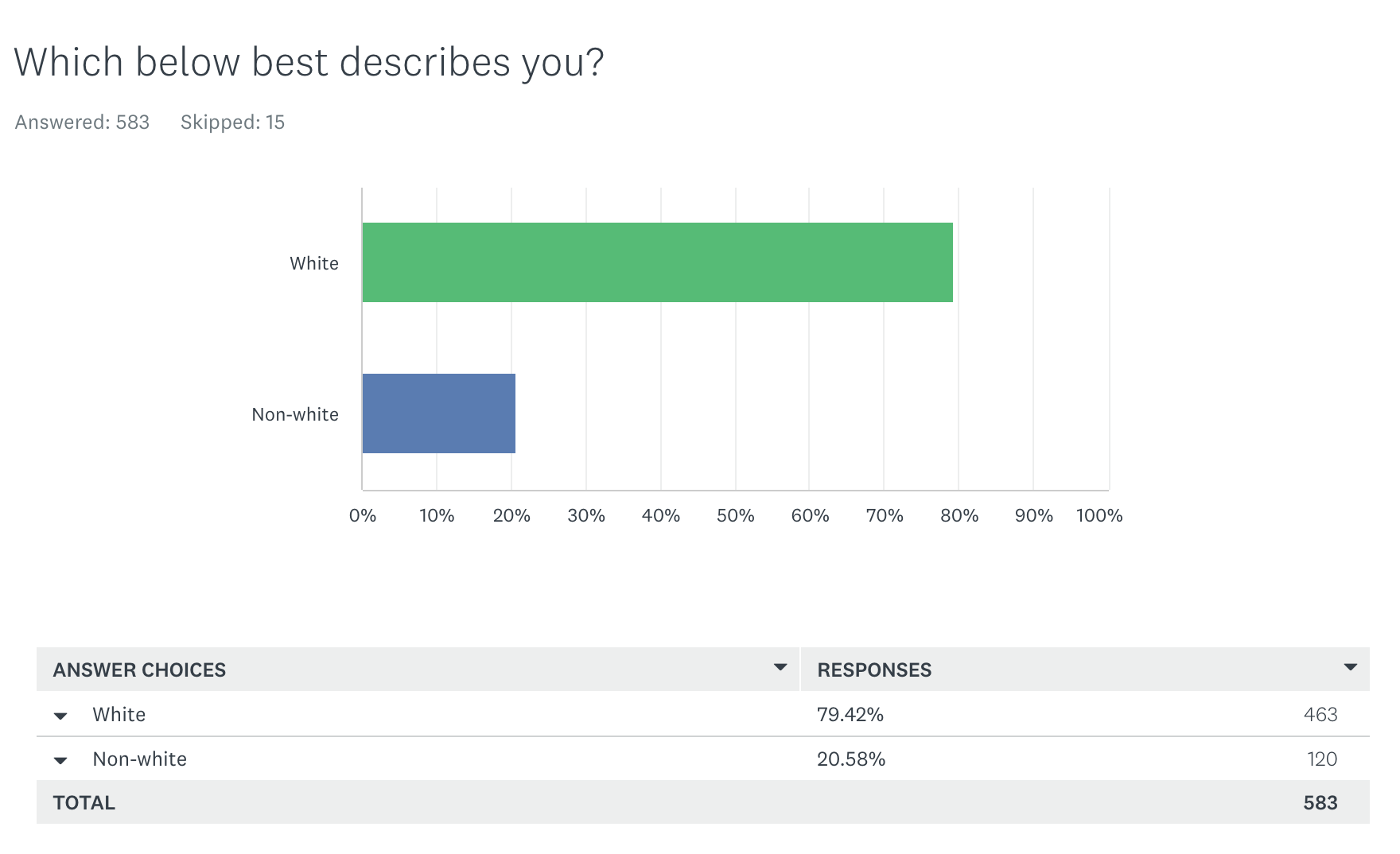
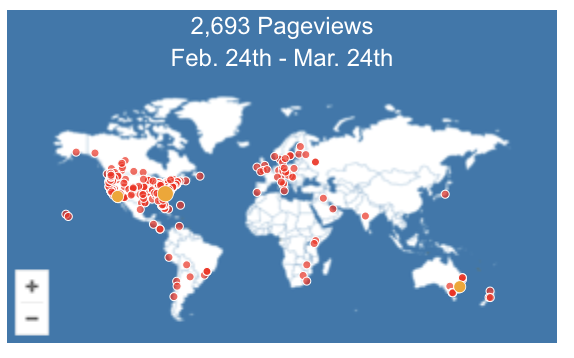
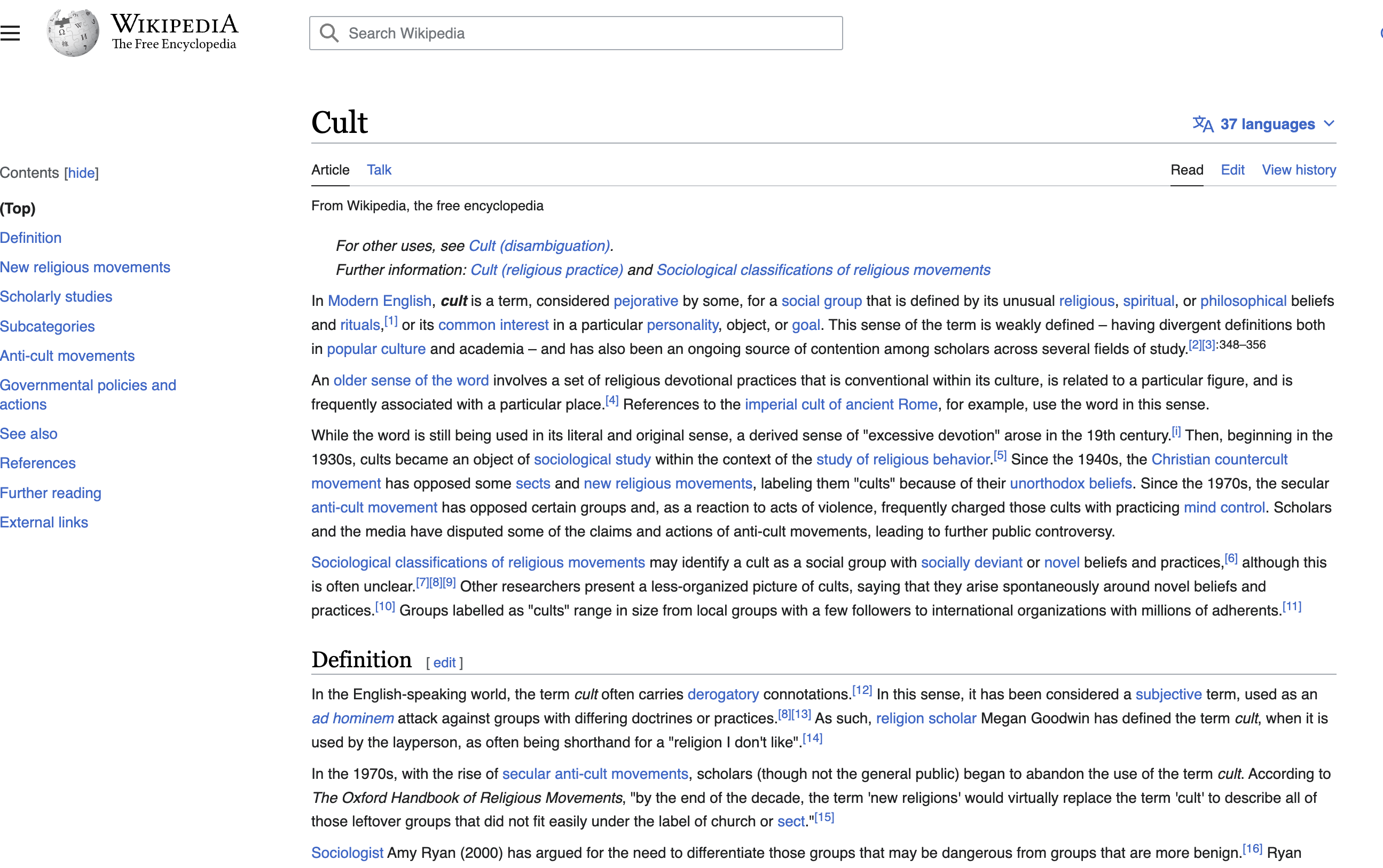 techniques within its milieu in order to deeply indoctrinate its followers and their current and future offspring. This is particularly damaging to Adventist children and should meet the minimum legal threshold necessary to define some SDA practices as inherently abusive towards children, and yet it is somehow not defined or viewed that way socially or legally. The SDA cult needs to be comprehensively exposed to as wide an audience of SDAs and non-SDAs as possible, and then be roundly and formally denounced by as many people and institutions as possible. E.G. White was likely a psychopathic con artist who may someday be viewed as one of the most impacting con artists in recorded history. The harm that Adventism has caused and continues to cause globally is being vastly underrepresented and undervalued, and warrants significant further research and social, political, legal, ethical, psychological, and theological scrutiny.”
techniques within its milieu in order to deeply indoctrinate its followers and their current and future offspring. This is particularly damaging to Adventist children and should meet the minimum legal threshold necessary to define some SDA practices as inherently abusive towards children, and yet it is somehow not defined or viewed that way socially or legally. The SDA cult needs to be comprehensively exposed to as wide an audience of SDAs and non-SDAs as possible, and then be roundly and formally denounced by as many people and institutions as possible. E.G. White was likely a psychopathic con artist who may someday be viewed as one of the most impacting con artists in recorded history. The harm that Adventism has caused and continues to cause globally is being vastly underrepresented and undervalued, and warrants significant further research and social, political, legal, ethical, psychological, and theological scrutiny.”